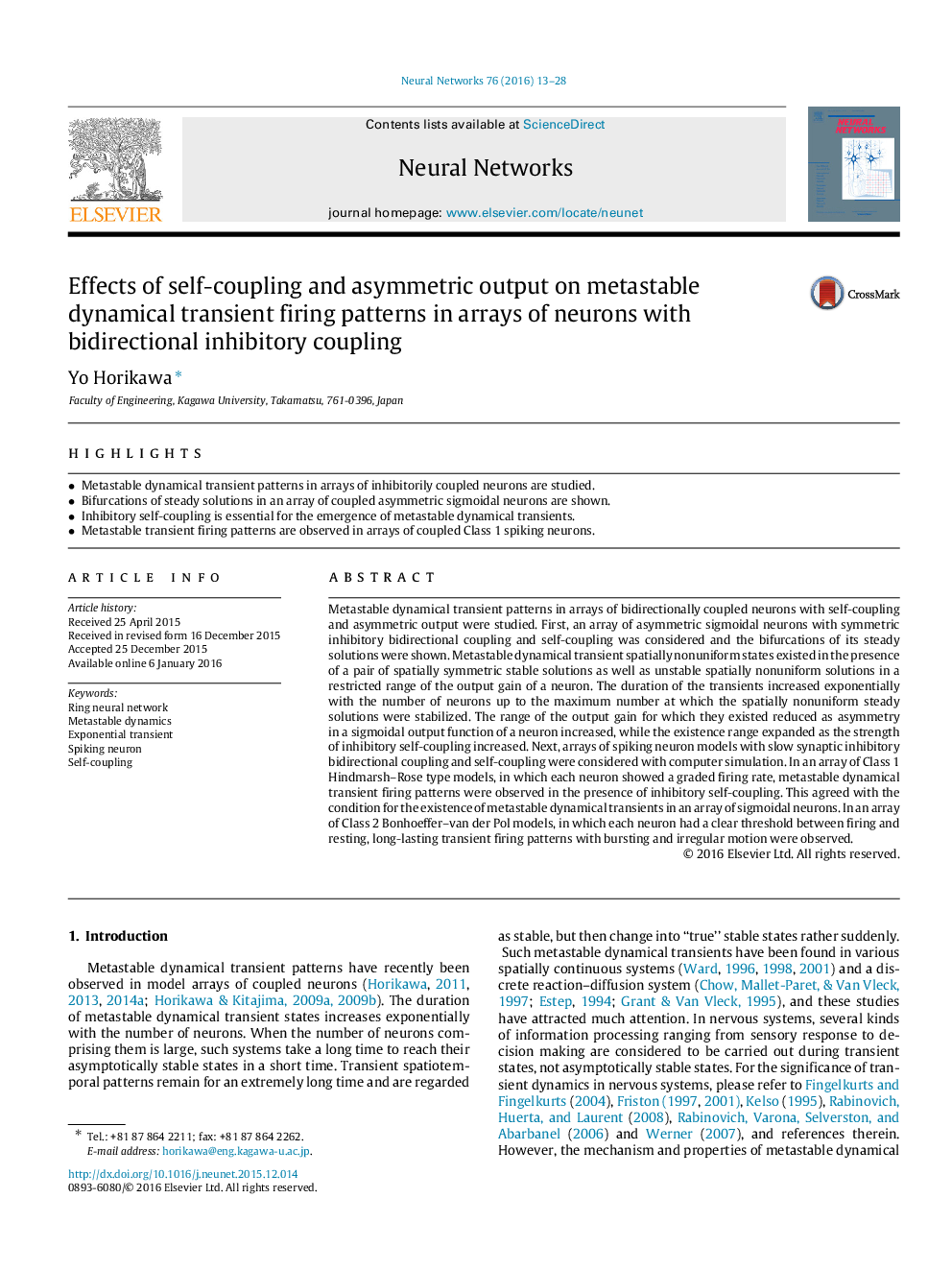| Article ID | Journal | Published Year | Pages | File Type |
|---|---|---|---|---|
| 405424 | Neural Networks | 2016 | 16 Pages |
•Metastable dynamical transient patterns in arrays of inhibitorily coupled neurons are studied.•Bifurcations of steady solutions in an array of coupled asymmetric sigmoidal neurons are shown.•Inhibitory self-coupling is essential for the emergence of metastable dynamical transients.•Metastable transient firing patterns are observed in arrays of coupled Class 1 spiking neurons.
Metastable dynamical transient patterns in arrays of bidirectionally coupled neurons with self-coupling and asymmetric output were studied. First, an array of asymmetric sigmoidal neurons with symmetric inhibitory bidirectional coupling and self-coupling was considered and the bifurcations of its steady solutions were shown. Metastable dynamical transient spatially nonuniform states existed in the presence of a pair of spatially symmetric stable solutions as well as unstable spatially nonuniform solutions in a restricted range of the output gain of a neuron. The duration of the transients increased exponentially with the number of neurons up to the maximum number at which the spatially nonuniform steady solutions were stabilized. The range of the output gain for which they existed reduced as asymmetry in a sigmoidal output function of a neuron increased, while the existence range expanded as the strength of inhibitory self-coupling increased. Next, arrays of spiking neuron models with slow synaptic inhibitory bidirectional coupling and self-coupling were considered with computer simulation. In an array of Class 1 Hindmarsh–Rose type models, in which each neuron showed a graded firing rate, metastable dynamical transient firing patterns were observed in the presence of inhibitory self-coupling. This agreed with the condition for the existence of metastable dynamical transients in an array of sigmoidal neurons. In an array of Class 2 Bonhoeffer–van der Pol models, in which each neuron had a clear threshold between firing and resting, long-lasting transient firing patterns with bursting and irregular motion were observed.
